Forex and stock market terms
This section contains basic terms related to trading on the Forex currency exchange; they will help a novice trader quickly understand the essence of the work.
Forex terms characterize the main points of the foreign exchange market; there are not many of them, so before starting work it is advisable to read their description, after which the trading process will become clearer and simpler for you. Each term given is described in as much detail as possible with examples of its use in practice.
Hedging in Forex.
One of the most well-known options for reducing risks is Forex hedging. Moreover, this is not only the most famous option, but also the most controversial: some traders refuse it on principle, while others make money only with its help.
Hedging is a method of reducing financial risks, in which two transactions are made in different directions, but in the same volume and for a similar group of assets.
What is a Forex correction and how to determine its size
As has been noted more than once, the main thing when trading forex is to determine the existing trend direction.
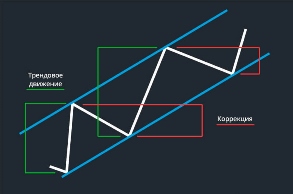
It should be noted that this movement does not always occur in the direction of the existing trend; in addition to the main direction, there is also a correction.
Forex correction – price rollbacks against the main direction of the trend, over a certain time period.
Such movements occur both with arbitrary regularity and relatively regularly, and their size depends primarily on the size of the timeframe. Also, correction in Forex depends on how sharp and strong the movement towards the trend was.
In practical trading, this phenomenon cannot be ignored, since it is this phenomenon that often causes premature stop loss triggering.
leverage, forex leverage, what it is and how to apply it
Thanks to such a tool as leverage, there is a real opportunity to earn decent money on Forex or the stock exchange, even with a small capital.

leverage is an indicator of the ratio of own funds to borrowed funds that can be provided by a broker to complete transactions.
In fact, this is a free loan, which is calculated depending on the trader’s deposit indicator. The size of the loan provided can range from 1:1 to 1:2000.
Forex leverage allows you to maximize the volume of transactions, which proportionally increases the amount of profit received from currency trading.
Everything will become clearer if we consider Forex leverage using specific examples:
Forex correlation, currency pair correlation table, special indicators
It has long been noted that the movement of currency rates on Forex in various pairs can be interconnected; this relationship is called correlation.
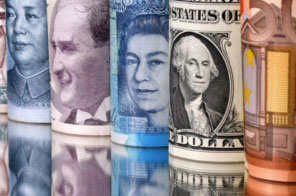
Forex correlation implies a stable relationship between the rates of various currencies in the foreign exchange market. In practice, they usually use the dependence of currency pairs, which greatly simplifies the trading process.
The strategy is quite common and has managed to win the trust of more than one generation of traders on various world exchanges.
When trading on the foreign exchange market, you have probably noticed more than once that as soon as one currency goes up, others follow suit, or vice versa, as soon as a trading instrument begins to fall in price, some other monetary units only strengthen their position.
Forex deposit
When trading Forex, there are several important indicators that characterize a transaction with currency; one of the most important is the Forex collateral, which is the trader’s own funds.
Forex collateral is the margin security of a transaction, that is, the amount that must be in the trader’s account to open a new transaction, taking into account leverage. For calculations, the “Free Funds” indicator in the trader’s trading terminal is used.
Forex consolidation.
Forex trading is replete with a lot of unclear terms that are often found in analytical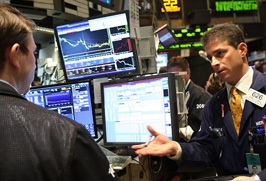 data and market reviews, one of these terms is Forex trend consolidation.
data and market reviews, one of these terms is Forex trend consolidation.
Forex consolidation is a slowdown in price movement after a sharp change; the price reaches a certain minimum or maximum, and then slows down its movement.
The reasons preceding consolidation are the release of important economic events, the rate reacts sharply to the news, but the movement does not last indefinitely and gradually the price begins to not suit sellers or buyers.
Hedge fund - investment features.
Those who have had an account in a foreign bank probably know how low interest rates are offered there on deposits, on average it is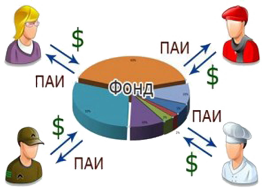 only 1% per year, and more often the amount is even less, so foreign investors have no choice but to look for alternative objects for investing money.
only 1% per year, and more often the amount is even less, so foreign investors have no choice but to look for alternative objects for investing money.
A hedge fund is an investment company that accepts client money and invests it in various types of highly profitable assets (stocks, bonds, currencies, precious metals, futures contracts, etc.).
An example of such a fund is Soros Fund Management LLC, created by George Soros, who until recently was actively involved in stock market speculation and accumulated billions of investor money. A person who has learned to make money on the stock exchange attracts money from investors to increase working capital, because it makes no difference whether to trade millions or billions. the trading strategy remains the same.
Intraday (intraday trading)
All Forex trading, based on the duration of transactions, can be divided into three main options - intraday trading, medium-term trading and swing trading.
Intraday (intraday trading) is trading exclusively within one day, when the opening and closing of an order occurs on the same calendar date. When this is done, all positions are opened and closed within one day, and their duration can range from 1 minute to 23.59 hours.
Investment portfolio
The topic of investment is especially relevant in the modern world, free capital must work and bring profit, there are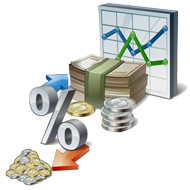 many options where you can invest money, the main rule is risk diversification.
many options where you can invest money, the main rule is risk diversification.
An investment portfolio is a set of different investments, each of which has a different level of risk and profitability.
In this case, investments can be both material (goods) and non-material (intellectual property) in nature. That is, you should not choose only one investment object; even the most reliable investment can bring losses, so the best option is when the investor’s funds are evenly distributed between several assets.
liquidity (forex liquidity)
The concept of liquidity is found in almost all areas of financial activity; it is not alien to the Forex market; in this case, its indicator is assessed as the demand for the selected trading instrument.
liquidity (forex liquidity) – characterizes how popular a particular currency pair is in the forex market. It usually depends on the amount of supply and demand for a given instrument, how quickly the submitted application finds a counter one in a similar currency.
Order by limit.
When placing a new, pending buy order in a trader's trading terminal, you are always faced with the question of what type of order should you choose? – buy stop or buy limit.
Order by limit - allows you to purchase a currency below the current Forex price level, that is, placing this order at first glance does not look logical, but this action implies the use of a special trading strategy, which we will discuss below.
long position (long position).
There are several options for the name of opened positions when trading forex, mainly the direction of orders is called buy and sell (a deal to buy or sell), but other names are often found, for example, long or short position.
long position (long position) – an operation on the stock exchange (stock, foreign exchange, commodity), during which the underlying asset is purchased. When carrying out this operation, the investor receives a profit only if the purchased transaction instrument grows.
Margin Call.
Thus, trading on the stock exchange almost always occurs using leverage; there is a possibility of losing not only the trader’s funds, but also the loan provided by the broker.
To prevent this, dealing centers use their own stop orders, which insure them against losses. One of these orders is Margin Call. Margin Call is a special level of unprofitability of a transaction, upon reaching which the broker can decide to forcefully close all open orders early.
Lot on Forex (Lot forex) what is it equal to, size calculator
For the convenience of users, all transactions on the Forex currency market are concluded in standardized volumes, so-called lots.

Lot forex is a standard volume with a strictly defined size of one transaction on the foreign exchange market. It is used to simplify calculations and round off the amounts of transactions involving the purchase or sale of currency.
One lot on Forex is 100,000 units of the base currency, which, when recorded, comes first in the currency pair, that is, the instrument for which the quotation operation is carried out.
For example, when buying euros for US dollars, the EURUSD quote is used, the base currency in this currency pair is, respectively, the European currency, therefore 1 lot for this operation will be equal to 100,000 Euros.
Online trading
The possibilities for making money on the Internet are simply amazing in their diversity; one of the options for such work is online trading, which allows you to make a profit by selling and buying various types of assets.
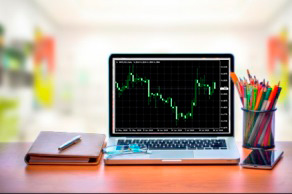
Online trading is trading in currencies, stocks or other instruments using special software and via the Internet.
A distinctive feature of this type of income is that to work you do not need to personally visit the office of a brokerage company.
All operations, from registration, identity confirmation and opening transactions themselves, are carried out exclusively online.
Online trading requires a minimum of equipment, and the software is provided completely free of charge.
Thanks to this type of income, you get a unique opportunity to master a new, highly profitable trader profession.
What is margin on forex and stock exchange or broker's margin
Recently, trading on the stock exchange has become especially attractive precisely thanks to margin trading; the use of leverage can significantly increase the funds at the trader’s disposal.

In order to understand the whole essence of the process, you should understand what margin is on Forex or on another financial, commodity exchange.
Broker margin is the amount of funds that a broker provides to a trader as a loan for trading on a currency, commodity or stock exchange.
These funds cannot be used for other purposes or simply withdrawn outside the brokerage company; they are a targeted loan that can only be used to conduct an exchange transaction.
Market Execution (market execution of orders).
Trading on the stock exchange involves two options for order execution - market and exact (instant), while Market Execution is in no way inferior to Instant Execution, despite the assurances of some Forex brokers.
Market Execution (market execution of orders) - implies that the placed order will be executed at the current market price, it may differ from the order price by a specified deviation size.
Margin trading (margin trading).
Currently, you can trade on the currency exchange with almost any initial capital, but a trader’s own funds are not always enough to make a significant profit. To increase the volume of transactions and, as a result, profits, margin trading is used.
Margin trading – trading on the stock exchange using margin leverage, which is provided free of charge to broker clients and allows you to significantly increase transaction amounts.
Martingale (Martingale).
This term can be found both in gambling and in Forex trading. There are many disputes and discussions surrounding this system of making transactions, but what exactly is Martingale?
Martingale (Martingale) is a capital, money or investment management system in which, after receiving losses, the amount of investment only increases.
Mini Forex - features of trading on mini accounts
Very often in advertising of brokerage companies you can find the statement “Forex trading literally from scratch,” but this advertising phrase is sometimes quite far from the truth, because when trading, not only the initial deposit is important, but also the size of the minimum lot.

In this case, mini Forex or trading on cent accounts comes to the rescue, allowing you to gain invaluable experience without risking large sums.
Mini Forex (mini Forex) – trading on the foreign exchange market using special accounts with a lot size reduced by 100 times and, accordingly, the trader’s deposit currency.
At the same time, there are no significant technical differences when conducting transactions and the execution of orders is not particularly different from trading on regular accounts.
Money Management - application features.
A term such as “Money Management” is often perceived as something complex and related to large sums of money.
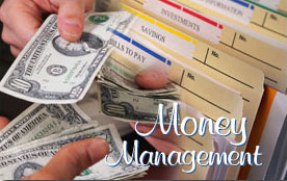
Money Management - capital management, measures to protect existing funds and ways to increase its amount.
In fact, all money management in Forex can be reduced to a few small points:
• The deposit amount with a broker is only 50% of all funds you have, the second 50% is better to keep in a bank account or invest (the percentage is higher). You should not risk your entire capital in any case, even if the amount of funds does not exceed several hundred dollars.
Liquidity of a currency (currency pair).
Quite often, a Forex trader has to deal with the following message from a broker: “Due to low liquidity, the spread on such ... currency pairs will be increased,” what is the liquidity of a currency pair and what factors influence this indicator.
Liquidity of a currency is the amount of supply and demand for a given means of payment, its popularity among sellers and buyers, that is, how quickly you can exchange a given monetary unit for another.
Order forex (Forex order).
All operations for buying and selling currency through the trader’s trading terminal are carried out using Forex orders, so it is quite important for the trader to know what these orders are and the features of their execution.
Order forex (Forex order) – an order to open a new position on the foreign exchange market or to take actions in relation to an existing one. Its classification will depend on the tasks that this order is designed to solve.
Pending order
When trading Forex, you cannot be at the trader’s terminal all the time, and a successful situation to enter the market can arise at any moment; in order to open a position at this particular time, a pending order is used.
Pending order is an order to open a new position, which will be triggered only if certain conditions are met - the rate reaches a certain point or the required time arrives.
Overbought (forex overbought).
The price level on any exchange is regulated by the presence of supply and demand for a certain group of goods, and the over-the-counter forex market is no exception. Sometimes by analyzing its condition you can understand where the price will move next and open a trade in the right direction. One such condition is overbought.
Overbought (forex overbought) is a market condition in which the demand for a certain asset (in our case, currency) has reached its maximum level. That is, buyers who were satisfied with this price had already concluded transactions to purchase currency at the existing rate.
Overnight trading (night trading on Forex).
When trading on the stock exchange, many traders gradually notice that the number of successful transactions depends not only on the correct trend forecast, but also on the time of day when trading is carried out. Therefore, it is sometimes customary to divide the trading process into day and night trading.
Overnight trading (night trading on Forex) – purchase or sale of currency in the period from 21-00 to 8-00 am, taking into account local time. At the same time, it is not necessary to postpone the transaction to the next day; the main indicator of night trading is the time it is carried out, and not the duration of the transactions.
Leverage on Forex
The reason for the loss of many traders' accounts is not a bad trading strategy or market situation, but a banal ignorance of the basic terms and operating principle of the broker who provides you with services to enter the interbank market.
One of the most important concepts that a trader should be able to correctly operate is - leverage in Forex, margin collateral, as well as the concept of true leverage.
You should especially pay attention to leverage and margin, as these are two key factors that can affect the profitability of your trading.
Leverage in Forex. Reason for appearance and principle of calculation
Oversold (forex oversold).
Supply and demand always actively influence pricing in any market; the greater the supply of similar goods, the lower the price for a given asset and vice versa, with increased demand and limited supply, the price only rises. In Forex, this aspect should be considered in relation to concluded contracts, so the basic concept here is oversold and overbought.
Oversold (forex oversold) - the predominance of contracts for the sale of currency in which there is a stop in the fall of prices, since the value of the currency pair stops falling. In this situation, a reversal of the downward trend in the opposite direction becomes more likely.
Level breakout on Forex.
Very often, beginners hear about the breakout strategy, and most professional traders recognize its fairly high effectiveness. What is a level breakout in Forex and how is it used in trading.
A level breakdown is when the price overcomes a certain price limit, which for some time was the boundary for further growth or fall of the exchange rate. It was near this border that the price previously made a reversal, but then a breakdown occurred and the rate of the currency pair moved further.
Forex drawdown and ways to reduce it.
When trading Forex, no one is insured against losses; there is no way to completely avoid unprofitable strategies; in practice, a successful transaction quite often gives way to a losing one and a drawdown of the deposit occurs.
Forex drawdown - a decrease in Equity as a result of losses incurred from unsuccessful transactions over a certain period of time, can be displayed in both relative and absolute values.
Profit factor.
Often, when testing new Forex trading strategies and automated advisors, one comes across such a concept as profit factor; it is this indicator that best characterizes the effectiveness of a trader.
Profit factor is a relative indicator that shows the ratio of profits received over a certain time period to losses. It is quite simple to calculate; to do this, we divide the profit for the reporting period by the losses for the same time - profit/loss.
Rebate.
There are many options to get additional bonuses by trading on the Forex or stock market; one of these options is the rebate system, which provides for the return of part of the commission paid.
Forex rebate is a discount or compensation in which a trader gets the opportunity to return part of the spread paid when trading on the foreign exchange market, which significantly reduces additional costs.
Forex pullback.
The movement of a trend in Forex never occurs in a straight line, as statistics show, the trend consists of 70% rollbacks and only 30% falls on the main trend.
Forex pullback is a price correction in the opposite direction from the main trend, after which movement resumes again in line with the prevailing trend. The magnitude of such a movement directly depends on the time period on which trading takes place; the longer the analyzed time frame, the longer the rollbacks on it.
Rollover (rollover) on Forex.
Any trader who has to roll over an open position to the next day is bound to encounter this concept, so it is important to know what a rollover actually is and take its size into account when trading.
Rollover is an indicator of the difference between the interest rates of the currencies that form the currency pair used in the transaction. It can have both positive and negative values depending on the size of the bets and the direction of the transaction.
Point (point) forex.
It seemed such a simple question, “What is a Forex point?” sometimes causes a lot of misunderstandings and additional questions, because each currency pair has its own point value, and other factors also influence its size.
Point (point) forex - sometimes also called a pip, this is the last digit in the quote of a currency pair, which characterizes the minimum possible change in the exchange rate in relation to the currencies in the currency pair.
Price channel.
Price channel trading is one of the most popular strategies in the stock and foreign exchange markets. It is this construction that allows you to evaluate the dynamics of the trend movement over a selected time period.
Price channel (price channel) is a space on the chart of the movement of a currency pair, limited by two lines. One of which characterizes the minimum price values, and the second the maximum.
Requote.
In addition to the fact that when trading Forex there is a possibility of incurring losses as a result of currency risk, there are also a lot of other troubles that interfere with trading, one of which is the occurrence of requotes.
Requote – refusal in the trader’s trading terminal to execute an order due to a price change. Typically, in this case, you will post the message “The order cannot be executed because the market price has changed, accept the new price?”
Swap free (trading without swaps).
The swap, or charge for rolling over a position to the next day, has always deterred most traders from extending day trades. Not so long ago, there was the emergence of swap-free accounts, where you don’t have to pay this type of commission.
Swap free – trading in which the difference between the rates of national banks is not taken into account, and the fee for transferring positions is carried out in a fixed amount.
Sell limit.
When trading on the foreign exchange market, you can not only open forward transactions, but also place pending orders, which will work only when the required price level is reached; Sell limit is one of these orders. The features of its installation will be discussed further.
Sell limit – a pending sell order, opens if the price reaches the specified value or goes above it.
Sell stop.
When trading on the Forex currency market, both instant and pending orders are used, and the latter have several options, one of which is a sell stop order.
Sell stop - a pending order to sell the base currency , involves opening a position if the price falls below a set indicator. As a rule, it is installed during a downtrend, but other installation options can be used.
Short position.
When trading on the stock exchange, there are only two options for the direction of transactions - buy and sell; you either buy or sell the underlying asset. This is why an open transaction will be called a short or long position.
Short position – a transaction to sell an asset (currency, shares, goods or raw materials). When carrying out this operation, the trader sells an asset that he does not have in stock, hoping to later buy it at a better price. Another similar contact is sometimes referred to as a sales transaction, so it is more understandable to a non-professional.
Resistance level.
One of the most important concepts that are used when conducting technical analysis on Forex is the resistance level. It is this indicator that underlies many trading strategies and is widely used in stock trading.
Resistance level is a point or line on the chart of a currency pair that characterizes the maximum price value for a certain period of time, upon reaching which the trend reverses.
Risk control (forex risk management).
One of the most important components of Forex trading is risk management, and a novice trader sometimes has no idea how important this issue is and how it affects the overall financial result of trading.
Risk management in Forex involves the use of a whole range of measures designed to reduce financial losses from the influence of both external and internal factors.
Slippage (forex slippage).
When working on a currency or stock exchange, unpleasant moments often occur that significantly complicate a trader’s work and sometimes cause losses.
One of these moments is price slippage.
Slippage (Forex slippage) – execution of an order at a price different from that presented in the current quote. It can have both positive and negative values depending on the direction of the trend and the type of position being opened.
Spread (forex spread).
Currency trading is always carried out through specialized intermediaries, brokers or dealing centers, who charge a commission for their services, called a spread.
Spread (Forex spread) is the difference between the price at which you can currently buy or sell a currency. It is usually determined using a simple formula: the purchase price (ask) minus the sale price (bid), resulting in the spread value for a given currency pair at the current moment.
Stop out (Stop out) forced closing of a position by a broker
The main attraction of trading on the currency exchange is the use of leverage provided by the broker, which allows you to increase the funds available for trading many times over.

In order to protect your funds from loss, the broker uses a stop out.
Stop out is an order to force the trader to close a position as soon as the loss reaches a certain level specified in the trading conditions.
Serves to protect the broker's funds when using the broker's borrowed funds to support an order of a larger volume than the trader's deposit.
Each brokerage company independently sets the loss value, upon reaching which the order will be automatically closed.
Swap (swap or fee for transferring a position).
No matter how brokers claim that the only commission on the foreign exchange market is the Forex spread, in addition there is also a fee for transferring positions to the next day. But unlike a spread, this type of commission can be either negative or positive.
Swap - the difference between the rates on the currencies forming the currency pair, is taken only if the position is transferred to the next day and if the interest on the loan is greater than the accrual on the deposit. If you transfer a position from Friday to Monday, this fee will be charged triple.
Take profit (take profit).
As Forex trading statistics show, most traders tend to maintain unprofitable trades until the last minute and close profitable ones quite quickly, without receiving the lion's share of the profit. Therefore, it is so important to immediately, before opening a new order, fix the amount of possible profit by setting the parameters of the take profit order.
Take profit is an auxiliary order that closes a position as soon as the price reaches a specified value, thereby fixing the achieved profit level.
Flat market (flat on Forex).
The price of a currency pair always has a certain direction of movement, the exchange rate either rises or, on the contrary, rapidly moves down, but there are also periods when the quote practically does not change; this market state is usually called a flat.
Flat market (flat on the market) is a relative calm on the currency or stock exchange, when the trend moves only in a horizontal direction, and the price of the selected asset practically does not change.
Risk Notice.
One of the reasons for the bankruptcy of Forex traders is inattention and a rather superficial attitude towards trading.
While studying the website of any Dealing Center, you will definitely come across such a concept as “Risk Notice”; this page of the website is subject to mandatory study. Forex Risk Notice - includes a set of rules for exchange trading and warns the trader about possible troubles that can lead to financial losses.
Sometimes reading this document completely discourages trading, but it is worth reading in any case; usually the link to the “Notification” is located at the bottom of the broker’s website.
Page 2 of 3


